The Status of Australian Swimming
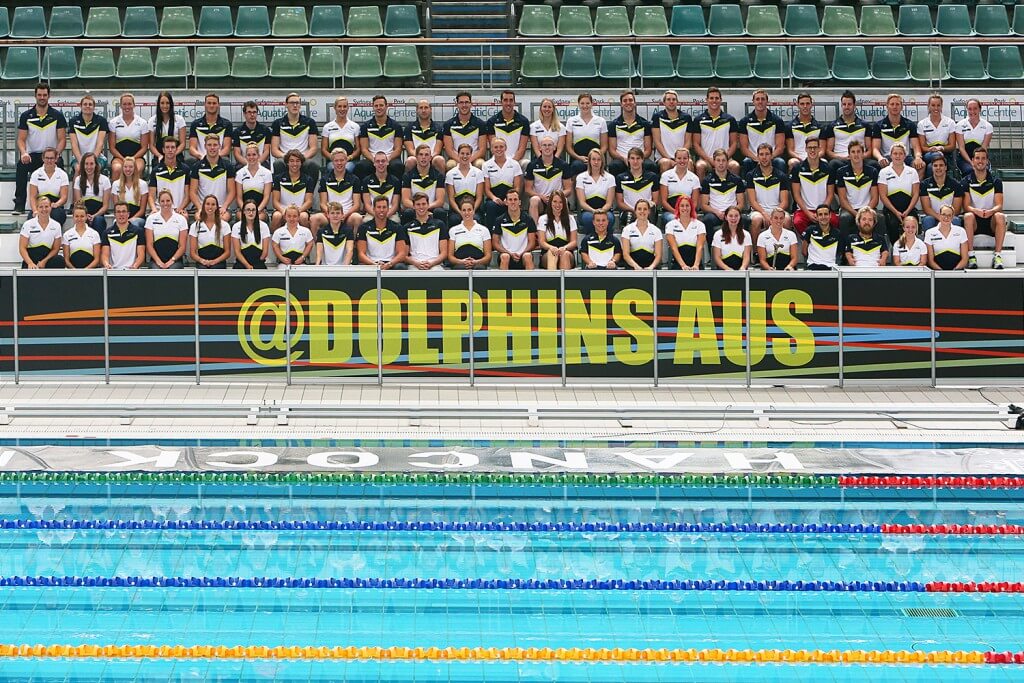
Commentary by Kevin Gill, Swimming World College Intern.
Over the course of history in the sport of swimming two nations have proved themselves as the most dominant in the world. Aside from the United States, the Australian national team has consistently been able to collect more medals at major international meets than any other country.
The culture of swimming in the country of Australia is unlike that of most nations. It is one of the most popular and most participated in sports among Australian athletes.
This popularity is evident in the success of the Dolphins Swim team over the years. Some of the most decorated swimmers in the sport’s history have worn the famous gold and green caps. Ian Thorpe, Grant Hackett, Libby Trickett, Kieren Perkins, and Susie O’Neill are just some of the legends that have been created from this fantastic swimming nation.
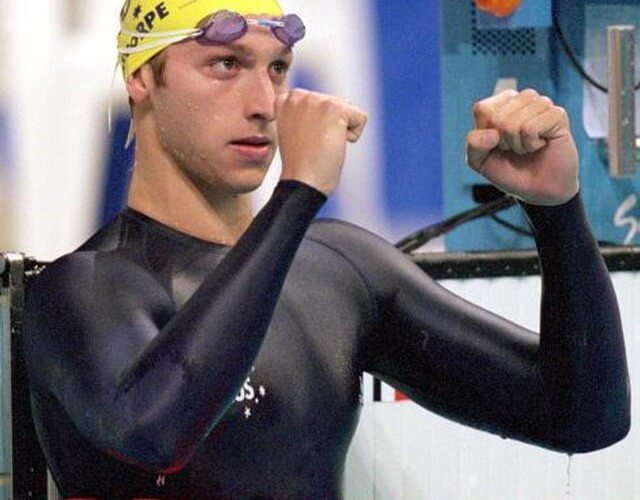
Photo Courtesy: Adidas
With all of the success of the many legends of the Dolphins Swim Team, it is interesting to see how the rich history of swimming in this country affects the recent performances of the gold and green.
At the 2012 Olympic Games in London the Australians looked poised to collected many medals, including multiple gold. At their Olympic Trials Stephanie Rice was back in form, the dynamic Campbell sister duo punched their tickets, and James Magnussen posted the fastest 100m freestyle in a textile suit (which was later broken by countryman Cameron McEvoy).
With these swimmers along with veterans Emily Seebohm and Lesile Jones, the Australians looked to be a force to be reckoned with. Led by Alicia Coutts, the Aussies took home from London the second most medals of any country, but only one was gold.
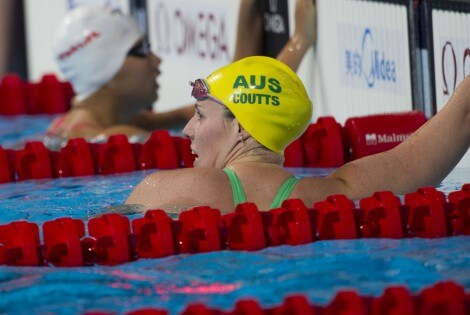
Photo Courtesy: Joao Marc Bosch
The mens’ 400 freestyle relay was left off the podium in a final many expected them to win. In addition to this upset, Magnussen, the 2011 world champion in the 100 free, was upset by the USA’s Nathan Adrian. With several disappointing swims, Australia knew they were capable of much more. They hired Jacco Verhaeren as the new national team coach in 2013 in hopes to return to their historic success.
After a very successful showing on their home soil at the 2014 Pan Pacific Championships, the Australian national team had high expectations for the 2015 FINA World Championships held in Kazan.
With a triumph in championship record fashion in the women’s 400 freestyle relay on day one, the Dolphins only got better.
Seebohm, Mitch Larkin, and Bronte Campbell all claimed two individual gold medals. The Aussies nearly equaled the typically dominant Americans in gold medals. With one of their best performances in the team’s history, the Australians carried more momentum than any other nation leading into 2016.
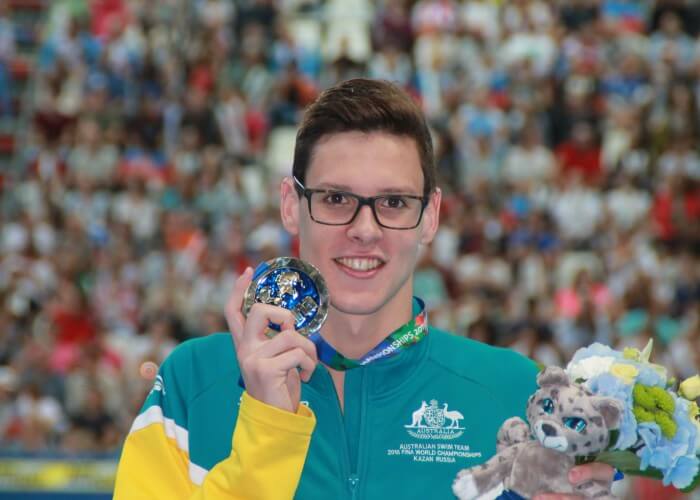
Photo Courtesy: Maria Dobysheva
The 2016 Olympic Trials for Australia seemed to be a continuation of the momentum that the team created the summer before. Seebohm and Larkin dominated the backstrokes, Mack Horton proved to be a gold medal contender in the distance events, and McEvoy broke Magnussen’s national record in the 100m free. The stage was set. The Australians would be poised to challenge for the most dominant swimming nation at the 2016 Olympic Games.
After day one of the Games in Rio, Australia had claimed two of the possible four gold medals. One of these medals, the women’s 400 freestyle relay, was done in world record time. The green and gold were off to a hot start with many of events they were favored in yet to come.
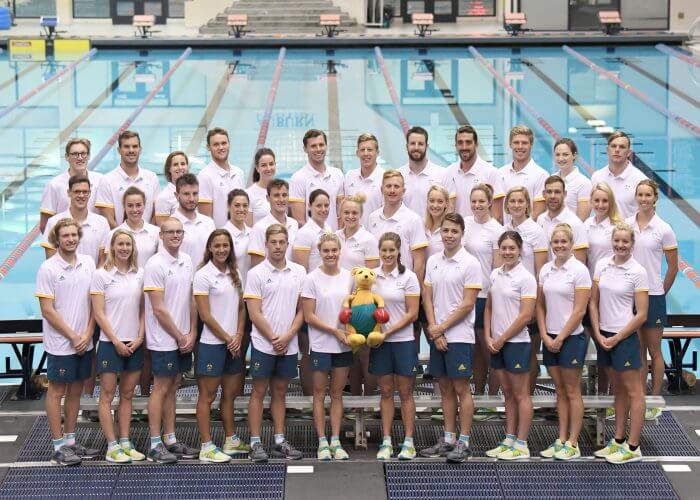
Photo Courtesy: Delly Carr / Swimming Australia Ltd.
Over the next week, the Dolphins collected a total of ten medals, three of them being gold. Although this was a step up from the London Games, there was still some disappointment from the Aussies.
Out of the seven events they had won at Worlds in 2015, Australians only claimed the top spot on the podium in one of them. Additionally, then world record holder Cate Campbell was upset in 100m free.
In the wake of minor disappointment, the future of Australian swimming showed great promise at the Games. Youngster Kyle Chalmers topped an impressive field in the 100m free to win one of three gold medals for Australia and Emma McKeon captured her first individual Olympic medal by getting third in a loaded 200m free final.
Now one year post Rio, we look at the what could have been done better for team Australia.
The trials meets for Australia are typically held around April. This meet is typically very fast for the stars of Australian Swimming. It has been recently announced that US National Team director Frank Busch will be meeting with the leaders of the Australian National Team to discuss the double taper. Moving the trials meet closer to the Olympics could improve the team’s overall performance.
Team expectations and added pressure may also be a problem for the Australians. At the 2012 Games, Seebohm entered the 100m backstroke final as the clear favorite for gold and she came up just short. Cate Campbell had a similar experience in Rio.
But with disappointments comes a great opportunity for redemption. In the spirit of Australian swimming, these swimmers have and will come back stronger and better than ever.
At this summer’s FINA World Championships, Seebohm found herself on the top podium again in the 200m backstroke. The race clearly meant so much for not only herself but her entire country.
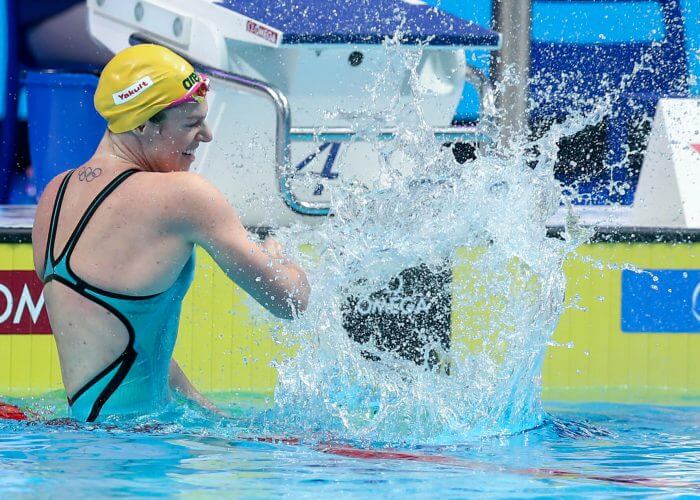
Photo Courtesy: SIPA USA
There is little doubt that Australian superstars like Cate and Bronte Campbell, Larkin, and McEvoy will soon return to their best swimming in order to represent their nation well.
The 2017 FINA World Championships may have seen Australia only claim one gold medal but this country with a historic dominance showed great signs of what is to come. The future looks bright for the Dolphins with young swimmers like Kaylee McKeown and Jack Cartwright as well as the experienced veterans.
All commentaries are the opinion of the author and do not necessarily reflect the views of Swimming World Magazine nor its staff.




As an American, I’m sure it will be easy to discount my remarks, but let me say in in the spirit of excellence in sport: there is something deeply awry in Aussie Swimming.
The World Championships 2017 SPAT which came out into the public over relays which involved Mr. Verhaeren and one of your elite male swimmers was as much a symptom of the problem as it was a sign that much more needs to be done.
TeamUSA swam the 2017 Championships without two guys: one named Phelps and one named Lochte; yet the medal haul was, I think, the biggest ever!
One can certainly assert that a country of 320 million people OUGHT to have a lane full of great swimmers – point made. But, after reading this article, I get the sense that there is no recognition of any fundamental problem; rather, there is a lot of ‘happy talk’ about how things will be great just around the next corner.
I disagree. In closing, I wish the Aussie National Team well; the tradition of Aussie swimming, as the article mentions, is great; now there must be a new leaf in the history of your nation’s premiere sport!
Mike, some interesting points albeit I think, like many, your views of AUS swimming remains anchored in the glory days that have passed rather than the realities of today.
Even in those glory days, AUS never had cross the board strength & depth. Indeed, it has tended to be the case that when the male side was in the ascendent (ie had a number of major intl figures and had strong relays), the other side was “muted” at best in performance with maybe only 1-2 medallists. Case in point the 90’s through to Sydney when the men had Thorpe, Hackett, Klim etc but the only strong females were O’Neill & Thomas. During the 00s, this reversed with the women being in the ascendent.
My piece below goes into greater depth re the actual grassroots situation for swimming in AUS; which in fact is becoming endemic in Olympic sport in AUS but with swimming being the historic powerhouse it is most noted. IS Swimming AUS really across this issue; I do strongly doubt but on reflection there is very little they can do. AUS is a country of 25mn; whilst its swimming infrastructure remains in advance of many; its lack of critical mass hurts esp when that available talent pool continues to contract.
Are there other things that can be done ?? Yes, but none are overnight or short term fixes. The switch to winter Trials is long overdue .. tick. More overseas racing ventures .. tick but this has to be expanded and there needs to be full “buy in” from both swimmers and coaches. It is the latter in fact where some of the greatest cultural change is required as too many (even major names) have historically “begged on” SC racing … and have been enabled by their coaches. It has been a reality that even great AUS swimmers have not collected as many intl golds/medals as they arguably should have due to their inferior race skills.
All too many leading AUS coaches are products of the AUS “system” and have zero experience outside this .This does not make them bad coaches; indeed they can produce excellent swimmers but that does not necessarily equate to great racers. It is my view that more young AUS coaches should seek out opportunities either in Europe or in Nth America (be it at club or collegiate level) to gain experience in other cultures, especially those with stronger racing cultures. This will in turn flow on to their charges when they return to AUS. Whilst it is the case that NCAA COULD be beneficial to a percentage of AUS swimmers, it is the coaching side of things which will have the greater long term benefits.
It is with regret that this Australian must advise the intern writer of this piece to make a significantly deeper study of swimming history, and in particular AUS swimming, before making such pronouncements as “Aside from the United States, the Australian national team has consistently been able to collect more medals at major international meets than any other country.”
Whilst this is superficially the truth; a further examination renders this distinctly more “nuanced” than on the surface. In reality, AUS has only ever been a presumptive “number two” to US swimming during two periods over the past 120+ years ….. and both of these have been centred around AUS hosting the Olympics and its resultant flow-on effects.
Firstly centred around Melbourne in 1956 through until 1972 and later centred around Sydney 2000 from the mid 90s through to the end of the 00s. Of the 60 Olympic swimming golds won by AUS; 45 were during these two periods; of the 188 Olympic swimming medals won; two thirds were won in those periods. Outside of these periods, AUS has only ever been a “mid table” player amongst the “second division”; always producing a few international contenders who may on their days snag an Olympic or World title) and maybe a handful of other medals but that was it. Why was the second period shorter than the first …. maybe a reflection of the reality that the spread of the sport internationally is far wider than it was 40-50 years ago ?
I will address two other points. Firstly the AUS performance in Budapest. In all honesty, it was on par with what the expectations should have been given the composition of the actual team and the form shown this year. There really WERE only two legitimately clear Gold chances and both of these were probably “second money” in the betting for those events; (1) W4X100 (sub strength from last year) and Seebohm (W200bk). One of them got up. Others like Horton, McKeon were more medal shots than gold bets … and that how they performed. None of the men’s relays were realistic medal chances (after Chalmers withdrew) and the results reflected that reality.
This team WAS distintctly under-strength and had a larger than usual quotient of rookies. There remains a distinct issue with post-Olympic drift with a number of the AUS Rio squad with many not appearing fully committed to Tokyo. Most of these “did the right thing” by making themselves but unavailable but 1-2 were on this team and performed in manners reflective of their attitude (one being an Olympic medallist and World Champion). The upside is that probably 80% of the rookies probably exceeded expectations with their performances.
My second point relates to the future trajectory of AUS swimming. I will start by expressing the core reality that at no time, even in the glory days, has AUS ever possessed the “cross the board” spread of talent or depth of the USA ….. no one can. Our writer make a somewhat airy observation “The culture of swimming in the country of Australia is unlike that of most nations. It is one of the most popular and most participated in sports among Australian athletes.” The problem is that this is no longer a reality !!
The sheer expense of supporting a serious competitive swimmer even at age group level is such that it is no longer a “sport of the people” but rather is now drawing from an ever contracting talent pool. The overwhelming majority of AUS national team swimmers these days come from the more affluent demographics/private school backgrounds. This trend has been in evidence for probably 15 years but now its really starting to bite.
Some of the moves touted ARE positive ones. The move to winter Trials is long overdue (AUS is a prisoner of its geographic isolation and being on opp seasons to almost everyone else). There needs to be a much stronger racing culture developed as poor race skills have historically cost World/Olympic golds for even some great AUS names. This will mean geting out there more to overseas meets as there is NOT the corporate backing to stage meets in AUS. Indeed corporate money for Olympic sports in AUS is very transient when available these days !
In short, AUS WILL continue to produce outstanding individuals who CAN win at World Olympic level and a few more who are medal contenders at any given time. At any given time some of their relays will be medal contenders and maybe one of them capable of threatening the USA or beating them but rarely will it be the case that all are contenders. Read your histories and you will see this to be the general pattern of performance.
In conclusion, I just think that AUS fans AND overseas observers/pundits need to recalibrate their views and expectations of AUS swimming to the realities of now (and the forseeable future) rather than viewing through lenses still stuck in the golden times that have now passed and are unlikely to return any time soon.